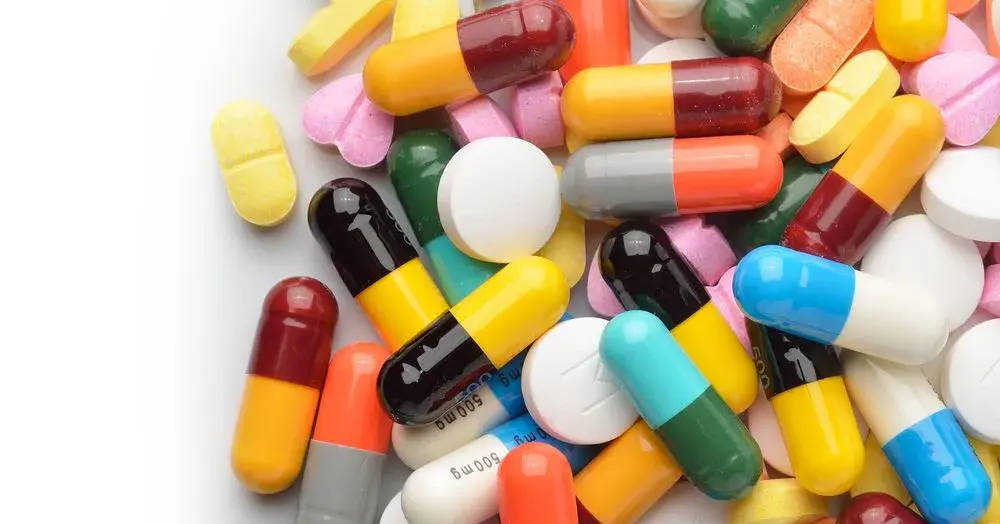soo, they trained AI on some set of compounds, then AI combed through them and found an old failed diabetes drug, and it seems to be killing some bacteria, via mechanism that involves binding to metals, which is notoriously nonselective, with no comment on how toxic can it be, incl that failed diabetes-influencing activity
i remain sceptical on this one
this thing was rediscovered four years ago and no trial was done? gee i wonder why
Experts applaud the computational approach, but say these compounds are not likely to be the drugs we need
The results show “how much can be achieved when skilled practitioners and machine-learning teams work together,” says Günter Klambauer, who leads an AI drug-discovery lab
Antibiotics experts also praised the group’s methods but were unimpressed by halicin. Several said the group’s results did not suggest the compound is the kind of antibiotic doctors need
the algorithm was too limited and didn’t allow the program to find truly novel structures: “We need new antibacterial chemotypes that may be hard to find through this approach,” says Richard E. Lee, an antibiotics researcher at St. Jude Children’s Research Hospital. And nitroaromatic groups can be toxic to human patients, as can the membrane-associated mechanism of action the researchers describe, says Shahriar Mobashery, a biochemist at the University of Notre Dame.
Collins says it’s fair to point out their molecules’ similarities to existing antibiotics. But he stresses that one of the major values in using machine learning is its speed in searching for antibiotic-like molecules. It took their model about 4 days to evaluate more than 100 million molecules.
(J. J. Collins is corresponding author of the paper cited) it’s garbage, but that garbage was generated fast!
John H. Rex, chief medical officer at the drug discovery firm F2G, echoed that critique. Rex, a former editor of the journal Antimicrobial Agents and Chemotherapy, says the work did not meet his standards for announcing a new antibiotic drug lead. In addition to his concerns about its efficacy against the most dangerous bacteria, Rex said the group’s tests of halicin’s toxicity fell short. He says he’d like to have seen the researchers test its toxicity against mammalian cells, which could provide a clearer picture of whether halicin would be toxic in the human bloodstream.
“It is quite easy to kill bacteria, even the tough ones, with toxic agents—and quite easy to find those,” says antibiotic expert Lynn Silver, who worked at Merck & Co. for 2 decades. But she says finding drugs is much harder: “Even well studied antibacterials fail in clinical trials due to toxicity.”
my policy of keeping techbros out of wet lab is unchanged
Drug discovery is one thing, but the trialling processes are another.
People actually pay to test them, you can even buy research chemicals in the clear net if I’m not mistaken
I have heard that this is the case.
However, these are not “research chemicals” in the sense that people usually seem to use the phrase. The article refers to antibiotics, cancer treatments, neuromodulators… the sorts of drugs that the FDA requires a great deal of testing in multiple rounds before human trials can begin. I somehow don’t think that experimental chemotheraputics, et al can be purchased from the same online outlets.
This will obviously depend on what country we’re talking about, but generally, I’d still expect tons of in vitro tests (e.g. applying it to body cells in a lab), then in vivo tests with e.g. mice and then a few tests with humans who’ve signed a contract, before such a chemical can be sold anywhere close to the free market.
Even if people volunteer for it, you can’t just poison them…
you absolutely can lol
AbsolutelyNotCats is (probably) talking about some of not-yet-banned compounds predicted to have some recreational properties, sold as a “research chemicals” because these are not and will be not tested. people like DMT or 2C-B? slap a methyl here or hydroxyl there and you’re good to go with selling this because it’s not illegal to do so. you can’t call this thing as safe or pharmaceutical or anything else, because it’s not tested this way
there are also CROs that will make a panel of compounds of your choice that you then test in some high-throughput screening and these are legit, non-sketchy companies that do participate in pharmaceutical design. that’s entirely different thing
Sometimes, you can even get them mixed in without knowing! /s
(if you’re going to get the stuff, try it near a fentanyl first aid dispensing machine…)
i hate to be the one that tells you this, but some rando cooking tryptamines in garage is not the kind of “research chemicals” that legit drug research uses. these are called CRO, contract research organizations and that would be Enamine ltd most of the time, they can make a wide array of compounds on demand. legit labs can get whatever they need (with appropriate paperwork), either as material for in vivo/in vitro testing or analytical standard
sometimes people get paid for participating in phase 1 trials, not the other way around
Are drugs made this way unpatentable, like AI generated images or text aren’t copyrightable?
i don’t think so, if the model is owned by single company, trained on their own dataset, access is restricted and basically used as an internal tool, that would make that company sole owners of all generated content right? that’s what happened with chematica, this is used for synthesis planning at merck so mildly similar area
Well that’s not how it works with AI generated text or images. OpenAI can’t copyright anything ChatGPT produces no more than anyone else can.
The article gives a hint, by explaining AI does only part of the work.
AI systems cannot yet accomplish every part of the drug development process alone, particularly in the late stages.
🤖 I’m a bot that provides automatic summaries for articles:
Click here to see the summary
In February 2020 — more than five decades after the science fiction film introduced the world to perhaps the first great AI villain — a team of researchers at the Massachusetts Institute of Technology used artificial intelligence to discover an antibiotic capable of killing E. coli, which hospitalizes thousands of people a year, as well as an antibiotic-resistant strain of another common bacterial infection, Acinetobacter baumannii.
The system found halicin in a fraction of the time that traditional methods would take, said Bowen Lou, an assistant professor at the University of Connecticut’s School of Business who studies how AI is changing the pharmaceutical industry.
This new technology continues to spur significant advancements in the medical field and holds the potential to improve patient outcomes and facilitate more precise treatment methods.
This is exactly what machine learning is made for: really complex systems,” Chris Gibson, the co-founder and CEO of biotech company Recursion, told Vox of recent breakthroughs in the drug discovery space.
Almost a decade later, scientists at Stanford led further developments in medical AI when they created the computer system MYCIN, which helped health care workers diagnose bloodborne bacterial infections in patients.
This rules-based system posed a series of questions on symptoms, medical history, test results, and various other factors and would generate a response reporting the likelihood of a particular diagnosis.
Saved 91% of original text.
deleted by creator









